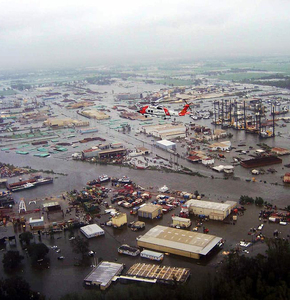GSL experimental models will be evaluated on how well they support flash flood and excessive rainfall forecasts

June 21-July 3 2021: GSL experimental models will be evaluated by forecasters for their utility in assessing the excessive rainfall and flash flooding threat in the Day 1 timeframe. Flooding is one of the most dangerous weather events and has caused an increasing number of deaths in the past few years.
This is the 12th year of the Flash Flood and Intense Rainfall (FFaIR) Experiment hosted by the Weather Prediction Center’s Hydrometeorology Testbed (HMT), and the second virtual event. An overarching goal of FFaIR each year is to help with the National Weather Service’s (NWS) research to operations (R2O) process by evaluating new warm season heavy rainfall and flash flooding guidance in a semi-operational setting.
This year four GSL Convective Allowing Models (CAMs), in addition to others, will be evaluated for their utility in assessing the excessive rainfall and flash flooding threat in the Day 1 timeframe. GSL’s 3D-Real Time Mesoscale Analysis (3D-RTMA) will also be evaluated. 3D-RTMA produces a real-time whole-atmosphere best-estimate analysis for situational awareness, nowcasting applications, and a final analysis of record for validation use. Participants will use the experimental guidance to forecast rainfall accumulations, rainfall rates, durations, and flooding in the Day 1 period synthesizing many operational and experimental deterministic and ensemble CAM systems.
The experiment spans four weeks between June and July and brings together people from across the meteorological community to focus on increasing the skill of forecasting heavy rainfall and flash flooding.
